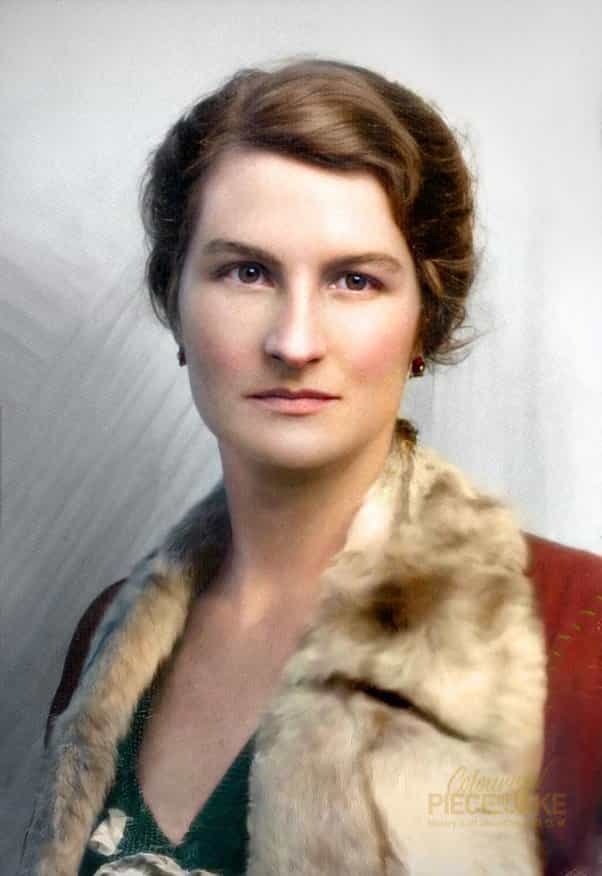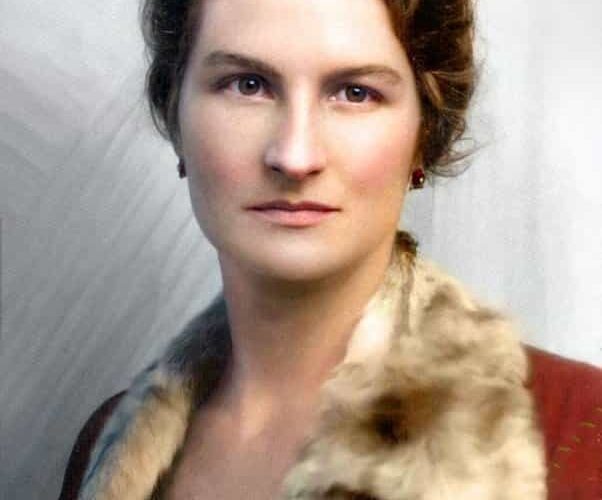Virginia Hall: The Brave American Spy with a Wooden Leg Who Outsmarted the Nazis

World War II was a time of great heroes, and one of the most remarkable was an American woman named Virginia Hall. Known as the “Limping Lady,” she became one of the most dangerous Allied spies in Nazi-occupied France.
Despite having a wooden leg, she organized daring sabotage missions, helped prisoners escape, and gathered critical information that paved the way for the Allied invasion. Her courage and intelligence made her one of the greatest female spies in history.
Virginia Hall early life
Virginia Hall was born in Baltimore, Maryland, in 1906. She came from a wealthy family that encouraged her to dream big. She was smart, athletic, and full of energy. In high school, her classmates voted her “the most original in our class.” She studied at top universities like Barnard and Radcliffe and later traveled to Europe, where she learned to speak French, German, and Italian fluently.
After finishing her studies, Hall wanted to work for the U.S. Foreign Service, but she was rejected because she was a woman. This didn’t stop her. She moved to Paris in 1940, just as World War II was beginning. When Germany invaded France, she drove ambulances for the French army. After France surrendered to the Nazis, she fled to England.
Becoming a Spy
In London, Hall’s life took an exciting turn. At a party, she was passionately talking about stopping Hitler when a stranger handed her a business card and said, “If you’re really interested in stopping Hitler, come and see me.” That stranger was Vera Atkins, a British spymaster who recruited agents for the Special Operations Executive (SOE), a secret organization created by Winston Churchill to conduct espionage and sabotage in Nazi-occupied Europe.
Atkins was impressed by Hall’s knowledge of France, her language skills, and her fearless attitude. In 1941, Hall became the SOE’s first female resident agent in France. She used a fake identity as an American reporter for the New York Post and began her mission.
The Limping Lady
Hall had a unique challenge: she walked with a limp because of a wooden leg. She had lost her left leg below the knee in a hunting accident years earlier and used a prosthetic leg she called “Cuthbert.” Despite this, she moved quickly and quietly, earning the nickname “the Limping Lady” from the Nazis.
Hall was incredibly skilled at gathering intelligence. She sent secret messages to London using coded radio transmissions and even hid messages in her fake news articles. She also built a network of resistance fighters who helped her carry out missions.
One of her clever tricks was using a potted geranium in her window as a signal. If the geranium was there, it meant there was a message hidden nearby—perhaps behind a loose brick in a wall or under a glass in a café. These creative methods helped her stay one step ahead of the Nazis.
The Most Dangerous Spy
Hall’s success made her a top target for the Gestapo, the Nazi secret police. They called her “the most dangerous of all Allied spies” and plastered wanted posters with her description all over France. When the Gestapo closed in, Hall had to escape. She made a daring 50-mile journey over the Pyrenees Mountains into Spain, despite the freezing weather and the pain from her wooden leg. Her guides initially refused to take her because she was a woman and an amputee, but she insisted and completed the grueling trek.
During her escape, she sent a message to her superiors in London, saying, “Cuthbert is giving me trouble.” They misunderstood and thought Cuthbert was a person, replying, “If Cuthbert is giving you difficulty, have him eliminated.” Hall later joked about the mix-up.
Returning to France
Even after her narrow escape, Hall wasn’t done fighting the Nazis. The British SOE wouldn’t send her back to France because she was too well-known, so she joined the U.S. Office of Strategic Services (OSS), the precursor to the CIA. In 1944, just months before the D-Day invasion, she returned to France disguised as an elderly peasant woman.
Hall organized sabotage missions that caused chaos for the German army. Her team derailed trains, blew up bridges, and killed or captured hundreds of enemy soldiers. Her work was crucial in weakening the Nazis before the Allied invasion of Normandy.
A Hero’s Legacy
After the war, Virginia Hall received the Distinguished Service Cross, one of the highest military honors in the United States. She was the only woman to earn this award during World War II. Hall continued her work with the CIA until she retired at age 60. She passed away in 1982, but her legacy lives on as one of the bravest and most resourceful spies in history.
Why Virginia Hall Matters
Virginia Hall’s story is inspiring for many reasons. She overcame personal challenges, like losing her leg and facing discrimination as a woman, to become a legendary spy. Her creativity, courage, and determination helped change the course of World War II. She proved that anyone, regardless of gender or physical limitations, can make a difference.
Today, Virginia Hall is remembered as a true hero. Her life reminds us that bravery comes in many forms and that even in the darkest times, one person’s actions can change the world.
FAQs About Virginia Hall, the WWII Spy with a Wooden Leg
1. Who was Virginia Hall?
Virginia Hall was an American spy during World War II. She worked for both the British Special Operations Executive (SOE) and the U.S. Office of Strategic Services (OSS). Despite having a wooden leg, she became one of the most effective and dangerous Allied spies in Nazi-occupied France.
2. Why was Virginia Hall called the “Limping Lady”?
Virginia Hall walked with a limp because she had a wooden prosthetic leg. She lost her left leg below the knee in a hunting accident before the war. The Nazis nicknamed her the “Limping Lady” because of her distinctive walk.
3. What made Virginia Hall so dangerous to the Nazis?
Virginia Hall was a master of espionage. She organized sabotage missions, helped prisoners escape, and gathered critical intelligence about Nazi troop movements. Her work disrupted German operations and made her a top target for the Gestapo, who called her “the most dangerous of all Allied spies.”
4. How did Virginia Hall become a spy?
After being rejected by the U.S. Foreign Service because she was a woman, Hall moved to Europe. When World War II began, she joined the British SOE after being recruited by Vera Atkins, a famous British spymaster. Hall’s language skills, knowledge of France, and fearless attitude made her an ideal spy.
5. What were some of Virginia Hall’s most famous missions?
- Building a Resistance Network: Hall recruited and organized French resistance fighters to carry out sabotage missions.
- Escape from the Gestapo: When the Nazis closed in, she escaped by trekking 50 miles over the Pyrenees Mountains into Spain, despite her wooden leg.
- Sabotage Before D-Day: In 1944, she returned to France with the OSS and led missions that derailed trains, blew up bridges, and killed or captured hundreds of German soldiers.
6. What challenges did Virginia Hall face as a spy?
- Physical Challenge: Her wooden leg made movement difficult, especially during her escape over the mountains.
- Gender Bias: As a woman, she faced discrimination and was initially rejected by the U.S. Foreign Service.
- Nazi Hunt: The Gestapo actively hunted her, distributing wanted posters and offering rewards for her capture.
7. What was Virginia Hall’s prosthetic leg named?
Hall affectionately called her wooden leg “Cuthbert.” During her escape from France, she sent a coded message to her superiors saying, “Cuthbert is giving me trouble.” They misunderstood and thought Cuthbert was a person, replying, “If Cuthbert is giving you difficulty, have him eliminated.”
8. What awards did Virginia Hall receive?
Virginia Hall was awarded the Distinguished Service Cross, one of the highest U.S. military honors for bravery in combat. She was the only woman to receive this award during World War II.
9. Did Virginia Hall work after the war?
Yes, after World War II, Virginia Hall continued her career in intelligence. She worked for the CIA until her mandatory retirement at age 60.
10. When did Virginia Hall pass away?
Virginia Hall died in 1982 at the age of 76. Her legacy as one of the greatest spies in history lives on.
11. Why is Virginia Hall considered a hero?
Virginia Hall’s bravery, intelligence, and determination made her a key figure in the Allied victory during World War II. She overcame personal and societal challenges to become a legendary spy, proving that anyone can make a difference.
12. Is there a book or movie about Virginia Hall?
Yes, Virginia Hall’s incredible story has been featured in books like “A Woman of No Importance” by Sonia Purnell. While there isn’t a major movie about her yet, her life is so extraordinary that it has the potential for a thrilling film adaptation.
13. What can we learn from Virginia Hall’s life?
Virginia Hall’s story teaches us about resilience, courage, and the power of determination. She showed that physical limitations and societal barriers can be overcome with perseverance and creativity.
14. How did Virginia Hall communicate with her allies?
Hall used creative methods to send messages, such as hiding coded information in her fake news articles and using signals like a potted geranium in her window. She also relied on radio transmissions and secret drop points, like loose bricks in walls or hidden messages under café glasses.
15. What was Virginia Hall’s impact on World War II?
Virginia Hall’s work significantly weakened Nazi operations in France. Her sabotage missions and intelligence gathering helped pave the way for the Allied invasion of Normandy (D-Day) and contributed to the eventual defeat of Nazi Germany.

